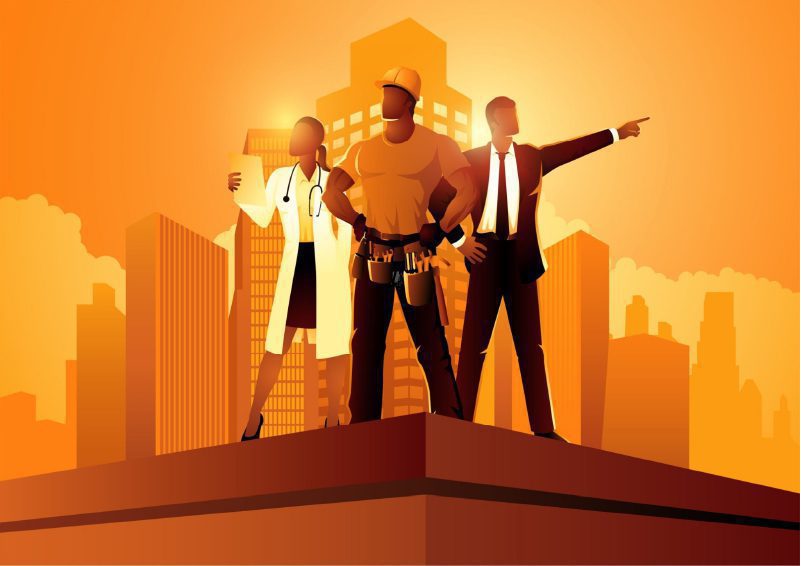Table of Contents Show
Are you a dreamer or a doer? Do you often find yourself lost in fantasies or stuck in analysis paralysis? Do you wish you could be a more practical person and realistic in your approach to life and its challenges?
If you answered yes to any of these questions, then this article is for you. Being a practical person is not a personality trait that you are born with or without. It is a skill that you can learn and improve with practice and experience.
Being a practical person means being able to deal with the realities of life in an effective and efficient way. It means being able to make sound decisions, solve problems, and achieve your goals without wasting time, energy, or resources. It also means being able to adapt to changing circumstances and cope with uncertainty and ambiguity.
Being a practical person does not mean being boring, dull, or unimaginative. On the contrary, being a practical person can enhance your creativity, productivity, and happiness. Being a practical person can help you turn your dreams into reality and make the most of your potential.
Here are 10 tips to help you become a more practical person:
Define your goals and priorities


One of the first steps to being practical is to have a clear idea of what you want to achieve and why. Having a vision and a purpose can help you focus your efforts and avoid distractions. It can also help you measure your progress and evaluate your results.
To define your goals and priorities, ask yourself questions such as:
- What are my values and passions?
- What are my short-term and long-term objectives?
- What are the benefits and costs of pursuing these objectives?
- How realistic and attainable are these objectives?
- How will I know if I have achieved them?
Write down your answers and review them regularly. You can also use tools such as SMART goals (Specific, Measurable, Achievable, Relevant, Time-bound) or OKRs (Objectives and Key Results) to make your goals more concrete and actionable.
Plan ahead and prepare for contingencies


Another key aspect of being a practical person is to plan ahead and anticipate potential challenges and opportunities. Planning can help you organize your tasks, allocate your resources, and manage your time. It can also help you reduce risks, avoid mistakes, and cope with changes.
To plan ahead and prepare for contingencies, ask yourself questions such as:
- What are the steps and milestones involved in achieving my goals?
- What are the resources and tools that I need or have access to?
- What are the deadlines and constraints that I have to meet or respect?
- What are the possible obstacles or difficulties that I might encounter?
- What are the alternative solutions or strategies that I can use if things go wrong?
Write down your answers and create a detailed action plan. You can also use tools such as Gantt charts, calendars, checklists, or flowcharts to visualize your plan and track your progress.
Be realistic and rational
A third aspect of being a practical person is to be realistic and rational in your thinking and decision-making. Being realistic means being aware of the facts and evidence, not the assumptions or opinions. Being rational means using logic and reason, not emotions or biases.
To be realistic and rational, ask yourself questions such as:
- What are the facts and data that support or contradict my beliefs or choices?
- What are the sources and reliability of these facts and data?
- What are the pros and cons of each option or outcome?
- What are the criteria and standards that I use to evaluate each option or outcome?
- What are the consequences and implications of each option or outcome?
Write down your answers and compare them objectively. You can also use tools such as SWOT analysis (Strengths, Weaknesses, Opportunities, Threats), decision matrices, or cost-benefit analysis to weigh your options and make informed decisions.
Be flexible and adaptable


A fourth aspect of being a practical person is to be flexible and adaptable in your actions and behaviors. Being flexible means being able to adjust your plans and strategies according to changing situations and feedback. Being adaptable means being able to learn from your experiences and improve your skills and knowledge.
To be flexible and adaptable, ask yourself questions such as:
- What are the changes or feedback that I need to respond to or incorporate?
- How do these changes or feedback affect my goals, plans, or actions?
- What are the advantages or disadvantages of these changes or feedback?
- How can I modify my goals, plans, or actions accordingly?
- What new skills or knowledge do I need to acquire or apply?
Write down your answers and update your action plan accordingly. You can also use tools such as PDCA cycle (Plan, Do, Check, Act), feedback loops, or learning journals to monitor your performance and implement improvements.
Be proactive and resourceful


A fifth aspect of being a practical person is to be proactive and resourceful in your initiatives and solutions. Being proactive means taking action before problems arise or opportunities pass. Being resourceful means making use of what you have or can find to overcome challenges or achieve goals.
To be proactive and resourceful, ask yourself questions such as:
- What are the potential problems or opportunities that I can anticipate or create?
- How can I prevent or solve these problems or seize or enhance these opportunities?
- What are the resources or tools that I have or can access or create to do so?
- How can I use these resources or tools in an effective and efficient way?
- How can I leverage my strengths or compensate for my weaknesses to do so?
Write down your answers and take action accordingly. You can also use tools such as brainstorming, mind mapping, or SCAMPER (Substitute, Combine, Adapt, Modify, Put to another use, Eliminate, Reverse) to generate ideas and solutions.
Be practical and pragmatic


A sixth aspect of being a practical person is to be practical and pragmatic in your outcomes and results. Being practical means being able to produce tangible and useful outcomes and results. Being pragmatic means being able to measure and evaluate these outcomes and results.
To be practical and pragmatic, ask yourself questions such as:
- What are the outcomes or results that I want or need to achieve?
- How relevant and valuable are these outcomes or results for myself and others?
- How specific and measurable are these outcomes or results?
- How achievable and realistic are these outcomes or results?
- How timely and sustainable are these outcomes or results?
Write down your answers and review them regularly. You can also use tools such as KPIs (Key Performance Indicators), SMARTER goals (Specific, Measurable, Achievable, Relevant, Time-bound, Evaluated, Reviewed), or OKRs (Objectives and Key Results) to define and track your outcomes and results.
Be simple and concise
A seventh aspect of being a practical person is to be simple and concise in your communication and presentation. Being simple means being able to convey your message in a clear and understandable way. Being concise means being able to convey your message in a brief and precise way.
To be simple and concise, ask yourself questions such as:
- What is the main message that I want or need to communicate?
- Who is the target audience that I want or need to communicate with?
- What is the best medium or format that I can use to communicate my message?
- How can I structure my message in a logical and coherent way?
- How can I eliminate any unnecessary or redundant information from my message?
Write down your answers and craft your message accordingly. You can also use tools such as the 5 Ws (Who, What, When, Where, Why), the inverted pyramid, or the elevator pitch to organize and deliver your message.
Be positive and optimistic


An eighth aspect of being a practical person is to be positive and optimistic in your attitude and outlook. Being positive means being able to focus on the good and the possible. Being optimistic means being able to expect the best and the feasible.
To be positive and optimistic, ask yourself questions such as:
- What are the good things that are happening or can happen in my life or work?
- How can I appreciate and celebrate these good things?
- What are the possible things that I can do or achieve in my life or work?
- How can I pursue and accomplish these possible things?
- What are the best things that I can hope for or expect in my life or work?
- How can I prepare for and embrace these best things?
Write down your answers and practice them regularly. You can also use tools such as gratitude journaling, affirmations, visualization, or optimism bias to cultivate a positive and optimistic mindset.
Be humble and respectful


A ninth aspect of being a practical person is to be humble and respectful in your interactions and relationships. Being humble means being able to acknowledge your limitations and mistakes. Being respectful means being able to appreciate others’ perspectives and contributions.
To be humble and respectful, ask yourself questions such as:
- What are the limitations or mistakes that I have or make in my life or work?
- How can I admit and learn from these limitations or mistakes?
- What are the perspectives or contributions that others have or make in my life or work?
- How can I listen to and value these perspectives or contributions?
- How can I express my gratitude or appreciation for others’ perspectives or contributions?
Write down your answers and apply them regularly. You can also use tools such as feedback, self-reflection, empathy, active listening, or thank-you notes to foster a humble and respectful attitude.
Be balanced and happy
A tenth aspect of being a practical person is to be balanced and happy in your life and work. Being balanced means being able to maintain a healthy equilibrium between different aspects of your life and work. Being happy means being able to enjoy a positive state of mind and emotion in your life and work.
To be balanced and happy, ask yourself questions such as:
- What are the different aspects of my life and work that matter to me?
- How can I allocate my time and energy among these different aspects of my life and work?
- How can I balance my needs and wants, my work and leisure, my personal and professional growth?
- What are the activities or practices that make me happy or bring me joy in my life and work?
- How can I incorporate these activities or practices into my daily or weekly routine?
- How can I cope with stress, challenges, or setbacks in my life and work?
- How can I cultivate a positive and resilient mindset in my life and work?
Write down your answers and implement them regularly. You can also use tools such as the wheel of life, the Eisenhower matrix, the happiness planner, or the PERMA model (Positive emotions, Engagement, Relationships, Meaning, Accomplishments) to achieve a balanced and happy life and work.
Conclusion on become more practical person
Being a practical person is not a trait that you either have or don’t have. It is a skill that you can learn and improve with practice and experience. Being a practical person can help you deal with the realities of life in an effective and efficient way. It can also help you turn your dreams into reality and make the most of your potential.
To become a more practical person, you can follow these 10 tips:
- Define your goals and priorities.
- Plan ahead and prepare for contingencies.
- Be realistic and rational.
- Be flexible and adaptable.
- Be proactive and resourceful.
- Be practical and pragmatic.
- Be simple and concise.
- Be positive and optimistic.
- Be humble and respectful.
- Be balanced and happy.
By applying these tips, you can become a more practical person who can handle any situation with confidence and competence.
FAQs on become more practical person
What are the benefits of being a practical person?
Being a practical person can have many benefits for your life and work, such as:
- You can make sound decisions, solve problems, and achieve your goals without wasting time, energy, or resources.
- You can adapt to changing circumstances and cope with uncertainty and ambiguity.
- You can enhance your creativity, productivity, and happiness.
- You can turn your dreams into reality and make the most of your potential.
What are the challenges of being a practical person?
Being a practical person can also have some challenges for your life and work, such as:
- You might face resistance or criticism from others who have different views or preferences.
- You might lose sight of the big picture or the long-term vision if you focus too much on the details or the immediate results.
- You might miss out on some opportunities or experiences if you are too cautious or conservative.
- You might neglect some aspects of your well-being or happiness if you are too busy or stressed.
How can I overcome these challenges?
To overcome these challenges, you can try these strategies:
- Communicate your rationale and expectations clearly and respectfully to others who have different views or preferences.
- Review your goals and priorities regularly and adjust them if necessary to align with the big picture or the long-term vision.
- Take calculated risks or experiment with new ideas or approaches if they have potential benefits or learning outcomes.
- Take care of your physical, mental, emotional, and social well-being by engaging in self-care activities or practices that make you happy or bring you joy.




